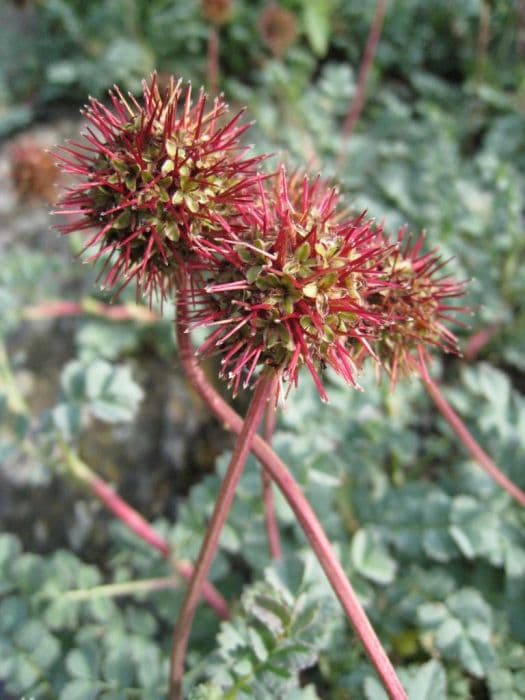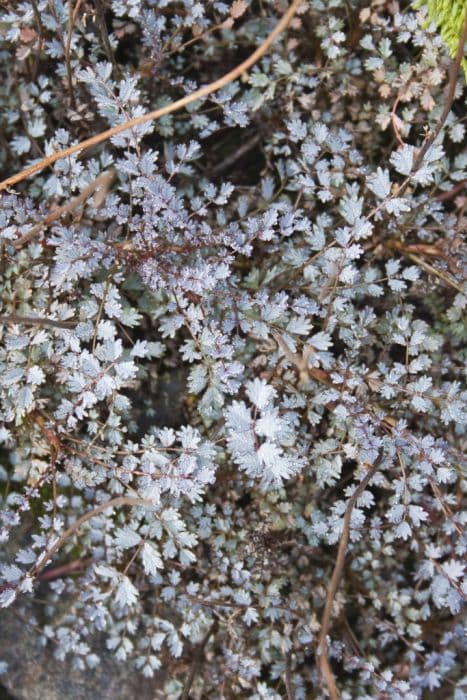Fascination Rose Rosa Fascination = 'Poulmax' (PBR) (F)
![rose [Fascination]](/_next/image?url=https%3A%2F%2Fplants-admin.emdemapps.com%2Fimages%2Fplants%2F%2Fimages%2F604b53a8ea525.png&w=3840&q=75)
ABOUT
Rosa Fascination, commonly known as the rose, is adorned with a profusion of enticing flowers that draw the eye with their unique charm. The blossoms display a captivating blend of hues, featuring shades that may vary from soft pastel pink to a more vibrant, deep pink that captivates the senses. These roses often exhibit a gradient of color that intensifies from the outer petals towards the center, creating an enchanting visual effect. Each flower is comprised of numerous delicate petals that form a classic, almost old-fashioned rose shape, known for its romantic and nostalgic appeal. The petals are velvety to the touch and may showcase a slight ruffle along their edges, adding to the plant's overall elegance and allure. The green foliage that serves as a lush backdrop to these striking flowers is no less remarkable. It is typically dense, with a glossy, leathery texture that provides a striking contrast to the softness of the petals. The leaves are pointed and may have a serrated edge, giving them a somewhat structured and ornamental quality. Collectively, the Rosa Fascination presents a magnificent display of floral splendor, with its breathtaking blooms standing out amidst the robust greenery. It embodies the quintessential charm and beauty for which roses are celebrated around the world.
About this plant
 Names
NamesSynonyms
Fascination Rose
Common names
Rosa 'Poulmax'
 Toxicity
ToxicityTo humans
The common name for Rosa Fascination = 'Poulmax' (PBR) (F) is rose. Roses are not considered toxic to humans. In general, rose petals, hips, and leaves are often used in culinary applications and are safe to consume. However, ingesting large quantities of any plant material may cause discomfort, such as an upset stomach or diarrhea, due to the fibrous plant matter. Additionally, care should be taken with thorns, which can cause physical injury if handled improperly.
To pets
The common name for Rosa Fascination = 'Poulmax' (PBR) (F) is rose. Roses are generally considered non-toxic to pets such as dogs and cats. The ingestion of rose petals, leaves, or hips typically does not cause serious harm to pets. However, the thorns on rose bushes can cause injuries if a pet attempts to chew on the stems or if a thorn becomes embedded in the skin. If a pet consumes a large amount of rose plant material, it may experience mild gastrointestinal upset, characterized by symptoms such as nausea, vomiting, or diarrhea.
 Characteristics
CharacteristicsLife cycle
Perennials
Foliage type
Deciduous
Color of leaves
Green
Flower color
Pink
Height
2-3 feet (0.6-0.9 meters)
Spread
2-3 feet (0.6-0.9 meters)
Plant type
Shrub
Hardiness zones
6
Native area
Cultivar
Benefits
 General Benefits
General Benefits- Aesthetic Appeal: Rosa Fascination, commonly known as the Fascination Rose, adds beauty to gardens with its vibrant and colorful blossoms.
- Fragrance: The Fascination Rose is known for its delightful fragrance, which can enhance the sensory pleasure of any garden or landscape.
- Pollinator Attraction: Bees and other pollinating insects are drawn to the flowers, aiding in the pollination of nearby plants.
- Landscape Versatility: This plant can be utilized in various landscape designs, including borders, hedges, and as a stand-alone specimen.
- Cut Flowers: The roses are suitable for cutting and can be used in floral arrangements, lasting well in vases.
- Perennial Plant: As a perennial, the Fascination Rose will return year after year, providing long-term value in the garden.
- Easy Propagation: Propagation through cuttings or grafting is relatively straightforward, allowing gardeners to expand their rose collection.
 Medical Properties
Medical PropertiesThis plant is not used for medical purposes.
 Air-purifying Qualities
Air-purifying QualitiesThis plant is not specifically known for air purifying qualities.
 Other Uses
Other Uses- Culinary Garnishes: Petals of the rose can be used to add a splash of color to salads or desserts for an elegant presentation.
- Floral Perfumes: Extracts from rose flowers can be incorporated into perfumes and scented oils due to their rich fragrance.
- Artisanal Crafts: Dried rose petals and buds can be used in creating potpourri mixtures or sachets to naturally scent drawers and closets.
- Natural Dyes: The petals of roses can be boiled to extract natural dyes for fabric or paper.
- Edible Delights: Some cultures use rose petals to make rose syrup, jams, or jellies.
- Botanical Illustration: Artists may use this cultivar as a subject for botanical drawings, watercolors or oil paintings due to its unique coloration and form.
- Religious Offerings: Roses are often used in various cultures as offerings during religious or spiritual ceremonies.
- Bath Additives: Rose petals can be added to baths for a luxurious and soothing experience.
- Educational Model: Horticulture students study different rose varieties, like 'Poulmax', for their growth habits and breeding characteristics.
- Special Events Decor: Fresh or dried roses can be used in floral arrangements for weddings, celebrations, or funerals to convey different emotions.
Interesting Facts
 Feng Shui
Feng ShuiThe rose is not used in Feng Shui practice.
 Zodiac Sign Compitability
Zodiac Sign CompitabilityThe rose is not used in astrology practice.
 Plant Symbolism
Plant Symbolism- Love: As a variety of rose, Rosa 'Fascination' symbolizes love. Roses have long been associated with deep emotion and passion, often used to express feelings of romance and affection.
- Beauty: The elegant form and the vibrant colors of Rosa 'Fascination' epitomize beauty. Roses are often seen as a representation of aesthetic perfection and grace.
- Mystery: The unique blend of colors in the 'Fascination' rose can convey a sense of mystery or enchantment, much like the elusive quality that roses are sometimes thought to possess.
- Balance: The harmony of its petals and the way it grows symbolize balance in life, representing the equilibrium that many strive for in relationships and personal endeavors.
- New Beginnings: Roses are commonly associated with new beginnings and renewal. Rosa 'Fascination' may be used to celebrate fresh starts or to encourage growth and rejuvenation.
 Water
WaterThe Rosa 'Fascination', more commonly known as the Floribunda Rose, should be watered deeply and thoroughly, ensuring the root zone is well-moistened, about once a week. Increase watering to twice a week during periods of extreme heat or drought. It's important not to water the foliage directly to help prevent disease. For each watering session, aim to provide about 1 to 1.5 gallons of water depending on the size of the plant and soil moisture levels, allowing the water to soak in slowly to reach the deeper roots.
 Light
LightThe Floribunda Rose thrives best in full sunlight where it can receive at least six to eight hours of direct, unfiltered sunlight per day. An ideal spot would be in a garden area with clear exposure to the sun throughout the day, avoiding shady spots which may hinder bloom production and plant vigor.
 Temperature
TemperatureThe Floribunda Rose generally prefers temperatures between 65 to 75 degrees Fahrenheit but can survive temperatures as low as 20 degrees and as high as 90 degrees Fahrenheit. Ideal growth and flowering occur when temperatures are within this optimal range, avoiding prolonged exposure to the extremes which may stress the plant.
 Pruning
PruningPrune the Floribunda Rose to maintain shape, remove dead or diseased wood, and encourage vigorous growth and flowering. The best time for heavy pruning is in late winter or early spring, before new growth begins. During the growing season, deadhead spent blooms regularly to promote continuous flowering.
 Cleaning
CleaningAs needed
 Soil
SoilRose Fascination prefers well-draining soil enriched with organic matter. A mix of one-third peat moss, one-third garden loam, and one-third compost or aged manure works well. The ideal soil pH for roses is between 6.0 and 6.5, slightly acidic. Regular mulching can help maintain soil health and moisture balance.
 Repotting
RepottingRose Fascination, like other roses, doesn't typically require frequent repotting. It should be planted in the ground or a large container where it can remain for several years. However, if growth is stunted or roots become pot-bound, it may be repotted in the spring.
 Humidity & Misting
Humidity & MistingRose Fascination does best in moderate humidity conditions. While it can adapt to different humidity levels, extreme conditions should be avoided. Providing good air circulation around the plant helps prevent disease in high humidity.
 Suitable locations
Suitable locationsIndoor
Place in sunny spot; water and fertilize regularly.
Outdoor
Plant in full sun; protect from extreme weather.
Hardiness zone
5-9 USDA
 Life cycle
Life cycleThe Rosa 'Fascination', commonly known as Fascination Rose, begins its life cycle when the seeds germinate or when it is propagated vegetatively through cuttings or grafting. Upon sprouting, the young rose plant enters a vegetative stage, producing leaves and stems as it matures. When conditions are favorable, particularly in spring to summer, the Fascination Rose enters the flowering stage, during which buds form and then blossom into its characteristic pink flowers. After pollination, typically by insects, the flowers may produce hips (fruit containing seeds) that, if not deadheaded, undergo seed maturation. If the seeds are dispersed and find a suitable growth medium, they can germinate and give rise to a new plant, thus continuing the cycle. The rose may enter a dormant phase during the colder months, conserving energy before resuming active growth and flowering in the next cycle.
 Propogation
PropogationPropogation time
Spring to Summer
Propogation: Rosa Fascination, commonly known as a variety of hybrid tea rose, is most popularly propagated through the method of taking stem cuttings. This is best done in late spring or early summer when the plant is actively growing. Cuttings should be about 6 to 8 inches (approximately 15 to 20 centimeters) long, taken from healthy, disease-free new growth. The cut end is often dipped in rooting hormone powder to encourage root development and then planted in a well-draining soil mix, keeping the environment humid. The cuttings are usually kept in indirect light until rooting occurs, which can take several weeks. Proper care should be taken during this time to maintain moisture levels without overwatering, as this can cause the cuttings to rot.









